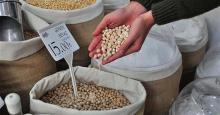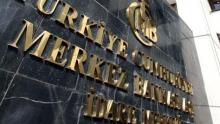Monetary inflation
Turkey's annual inflation hits 9.2 percent in first month of 2017
Turkey's annual inflation hit 9.2 percent in January from the previous month's 8.53 percent, making it the highest inflation rate in a year amid a decline in the Turkish Lira and a rise in food prices.
The consumer price index rose by 2.46 percent in January, according to data released by the Turkish Statistics Institute (TÜİK) on Feb. 3.
Eurozone consumer confidence index hits 5-year high
Consumer and business confidence in the Eurozone rose to 108.2 points in January, the European Commission has announced. This is the largest increase since March 2011, sparking talks on the policy of quantitative easing and a subsequent rise in inflation at the end of 2016, leading some pundits to argue it should be railed in.
Weak lira could knock Turkish Central Bank off targets in early 2017
Weakness in the Turkish Lira could start to drive up prices and knock the Central Bank off its targets in the first quarter of next year, but the impact will depend on the pace of economic activity, Governor Murat Çetinkaya said on Dec. 6.
Turkish Central Bank raises rates for first time in 3 years as Turkish Lira plunges
Turkey's Central Bank raised its benchmark interest rate by 50 basis points on Nov. 24 in an unexpected move, ordering the first increase in nearly three years, as a skyrocketing U.S. dollar and domestic worries continue to batter the Turkish Lira.
Fed up with volatile prices, Turkish government steps in to help Central Bank
The Turkish government plans to take a more active role in fighting inflation and will attempt to tame volatile food prices, senior economic officials said, moves designed to give the Central Bank more leeway for monetary easing.
The change, the officials say, reflects the government's acknowledgment that the Central Bank has limited ability to curb price increases.
Turkish inflation below forecasts, as food prices slow down
Turkish consumer prices rose less than forecast in September on the back of a significant fall in food prices, data from the Turkish Statistics Institute (TÜİK) showed on Oct. 3.
Turkish Central Bank cuts rates for seventh consecutive month amid inflation concerns
The Turkish Central Bank cut its overnight lending rate by 25 basis points on Sept. 22, setting aside concerns about inflation in a bid to boost the economy.
The bank left its benchmark one-week repo rate unchanged at 7.5 percent but reduced the highest of the multiple interest rates it uses to set policy to 8.25 percent.
Turkey's new Central Bank chief eyes simpler policy, price stability
Turkey's new Central Bank governor took a cautious stance on the outlook for inflation on April 26, saying price stability would be his priority, and signaling his ambition for simpler and more transparent policy.
A more unconventional monetary policy in Turkey?
When developing Asia was in crisis in the 1990s, the world valiantly upheld monetary orthodoxy. Then Europe went into crisis in 2008, and world leaders came up with unconventional monetary policy. That's when we all learned about monetary easing and negative interest rates. So the poor were forced into discipline, while the rich could indulge in "helicopter money." Well, guess what?
- Read more about A more unconventional monetary policy in Turkey?
- Log in to post comments
Bundesbank boss criticises ECB 'bazooka'
The president of Germany's Bundesbank on March 19 criticised the latest package of stimulus measures by the ECB including slashing rates still further, warning against "reckless" moves and unintended fallout.
- Read more about Bundesbank boss criticises ECB 'bazooka'
- Log in to post comments









